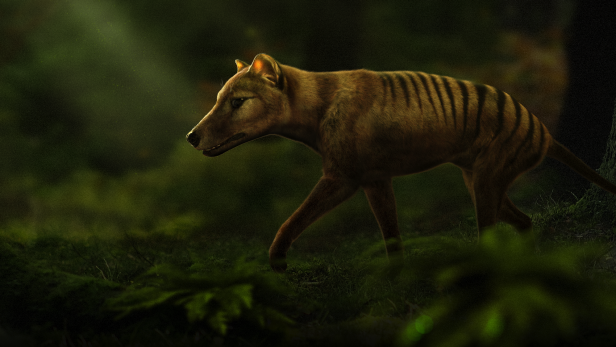
Scientists in Australia and the United States are embarking on a multi-million dollar project to bring back to life an Australian wolf-like striped tiger that went extinct nearly 100 years ago. The researchers plan to reintroduce the animal to its native Tasmania. (Clorazepate/) The effort is being led by an organization that specializes in “breakthrough genetic engineering.” It describes itself as a “de-extinction company.” This is their second project after they declared the resurrection of the woolly mammoth in 2021.
Australian ecosystem suffered degradation and biodiversity loss after the animal’s extinction
According to experts, the Australian ecosystem suffered degradation and biodiversity loss after the animal’s extinction. This is one of the major reasons behind the resurrection of the Tasmanian tiger. Notably, catastrophic bush fires have impacted millions of animals. It has pushed wildlife in the country on the fast track toward extinction. It is estimated that Australia has one of the highest mammalian extinction rates.
The development of such technologies would aid in the preservation of the ecosystem. It will preserve marsupial conservation efforts using ancient DNA retrieval and artificial reproduction, through the process of de-extinction.
The tiger could be reintroduced into the wild within a decade
Reportedly, thylacine could be reintroduced into the wild within a decade. The last Tasmanian tiger died in a zoo in 1936. The reason behind the decline in its population was the local government; it announced a reward for its killing to protect the sheep. However, locals have claimed of seen the animal many times in the wild, spawning hopes that it somehow survived. “It’s like our Loch Ness monster.”
“Our ultimate goal with this technology is to restore these species to the wild where they played absolutely essential roles in the ecosystem. So our ultimate hope is that you would be seeing them in the Tasmanian bushland again one day,” said Andrew Pask, head of the Thylacine Integrated Genetic Restoration Research Lab at the University of Melbourne.
The complex process of resurrection
Though no specific timeline has been specified yet. However, Colossal founder Ben Lamm stated that the first mammoth calves could be produced after five to six years. The gestation period of marsupials is smaller as compared to its closest species, the dunnart. The process also involves building artificial wombs for the modified DNA to gestate, where the dunnarts would act as surrogates.
While the reprogramming of the dunnart skin cells into stem cells has been done, the process of testing whether they can generate an embryo is still on. The thylacine might be one of the first animals in history to be brought back if the process is completed successfully.
